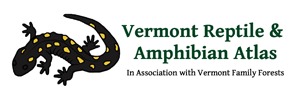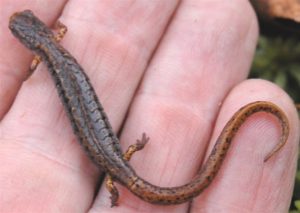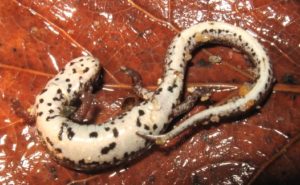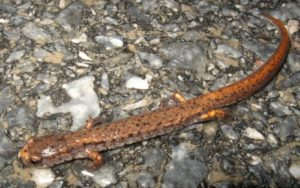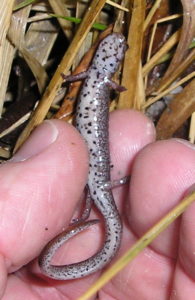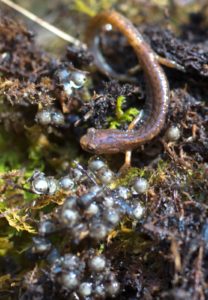Hemidactylium scutatum
Identification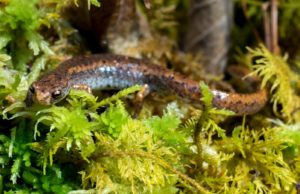
The Four-toed Salamander is one of our three small, slender salamanders along with the Eastern Red-backed and Northern Two-lined Salamanders. It is our only terrestrial salamander that has four toes on its rear feet. The average length of a large adult in Vermont is 3.2 inches (the longest documented in Vermont can be viewed here). Four-toed Salamanders have black flecks on a reddish-brown back and grayish-brown upper sides. Their belly and lower sides are bright white with black scattered spots. The back has grooves on it that can form a chevron pattern.
Large, healthy adults have a constriction at the base of their tails, which is where their tail can break off if grabbed by a predator. It will later grow back.
The females lay 15-64 eggs in moss or debris near water.
Get more detailed identification and life history information by downloading the chart here.
You can learn more about this species and see some video footage by checking out this clip from our Rattlers, Peepers & Snappers DVD.
Range/Habitat
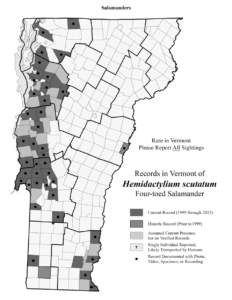
[ click image to zoom | download printable PDF ]

[ click image to zoom | download printable PDF ]
This species has been reported primarily in the Lake Champlain Basin and the Connecticut River Valley. However, it likely occurs in many more low-elevation towns and we encourage people to look for it, particularly in habitat that also supports Blue-spotted Salamanders.
Status
This species has a state natural heritage rank of S3 (uncommon, localized). The Four-toed Salamander is a species of special concern. It has been designated a Species of Greatest Conservation Need (medium priority) in Vermont’s Wildlife Action Plan. Please report all sightings of this species in Vermont. Take photos if possible. Even historic sighting information is useful.
Additional Photos
More Info
- Hemidactylium scutatum at Animal Diversity website
- Hemidactylium scutatum at Amphibiaweb
- Hemidactylium scutatum at the Canadian Herpetological Society website
- Hemidactylium scutatum in the Vermont Agency of Natural Resources’ Wildlife Action Plan: Amphibian & Reptiles (9/25/2015 draft)
- Hemidactylium scutatum at the Yale Peabody Museum of Natural History website
Species summary written by Ariel K. Mck. Burgess.
